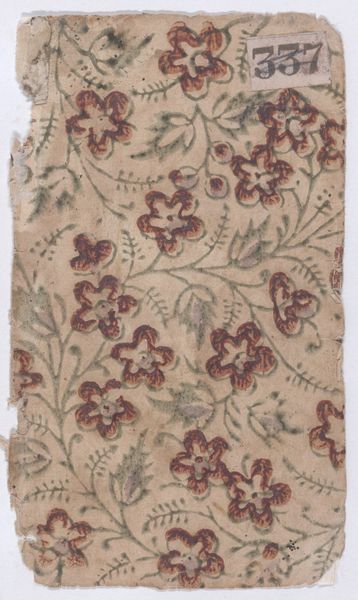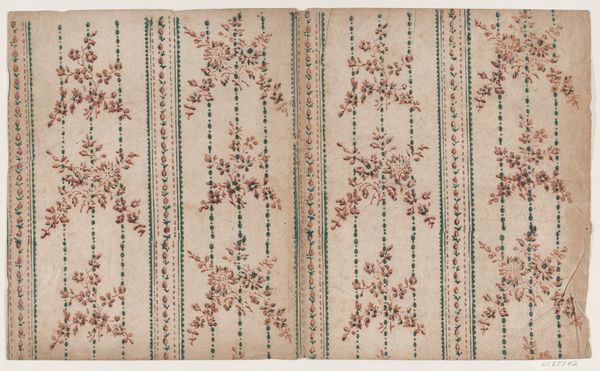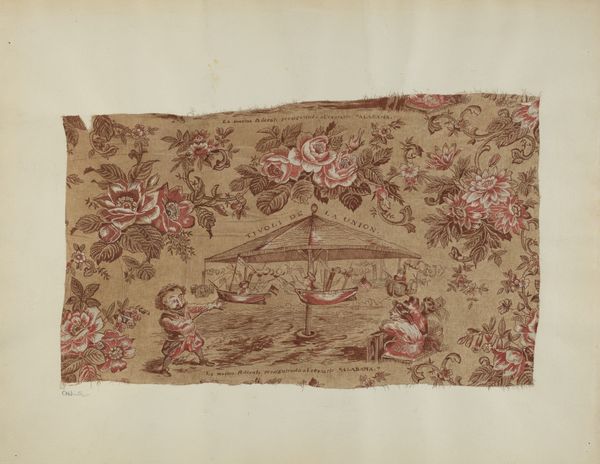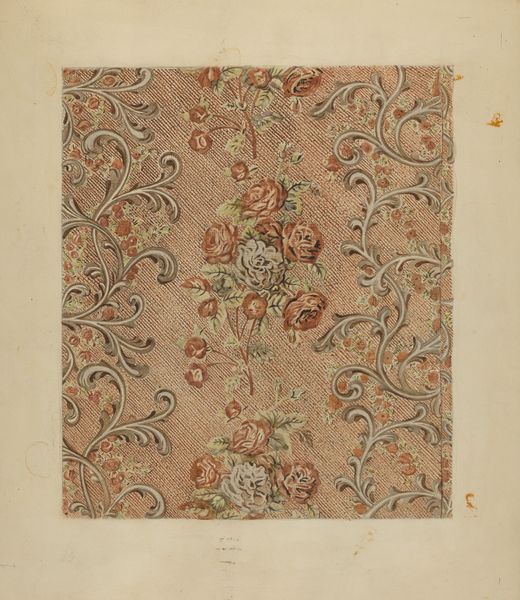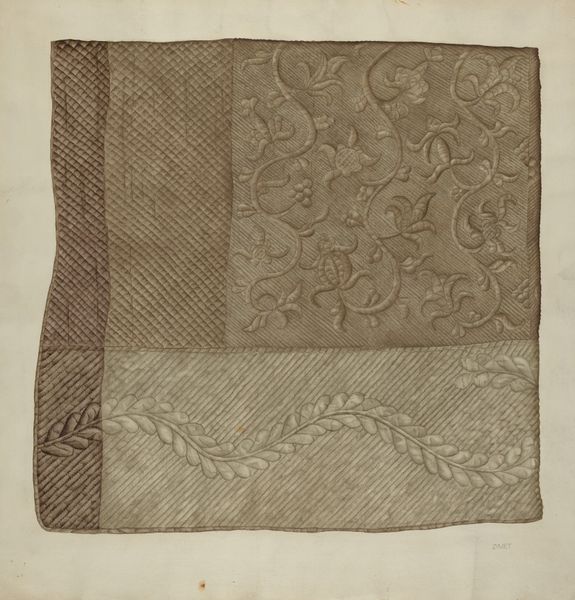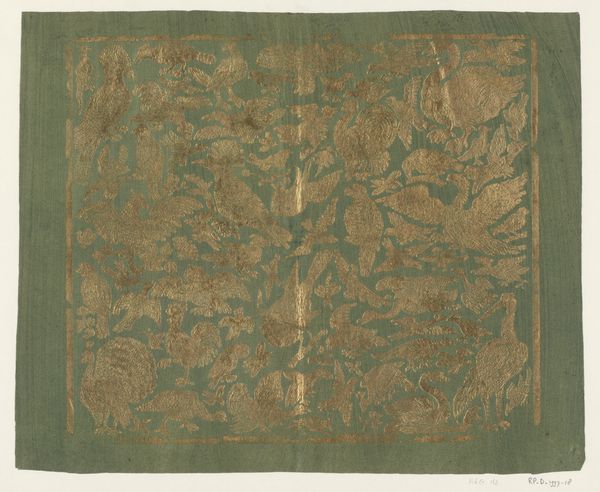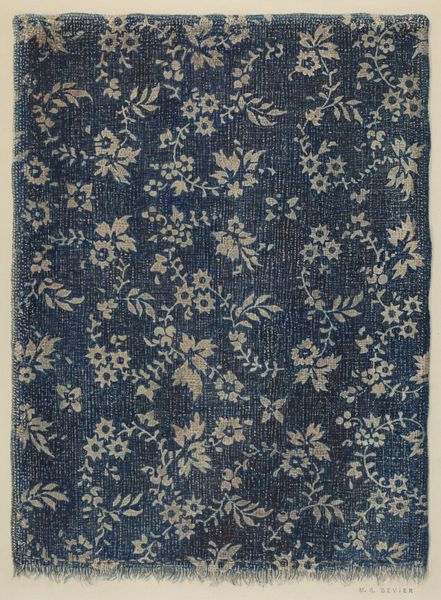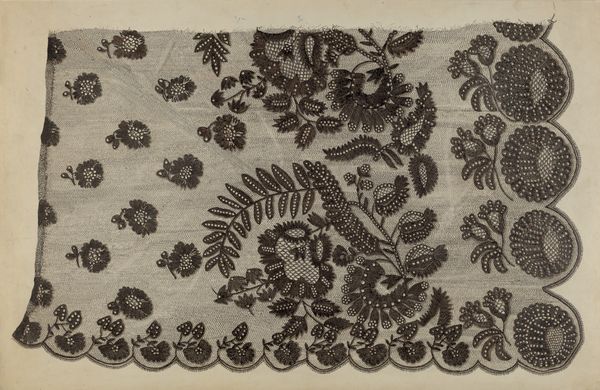
stencil, watercolor
#
stencil
#
watercolor
#
watercolor
Dimensions: overall: 55.8 x 75.9 cm (21 15/16 x 29 7/8 in.)
Copyright: National Gallery of Art: CC0 1.0
Curator: Here we have "Stencilled Wall," a watercolor drawing dating to around 1940, attributed to Michael Lauretano. It seems to demonstrate some of the hallmarks of decorative art. What strikes you about it? Editor: It feels so warm and domestic. I'm drawn to the brown—almost sepia—ground. You can see how the stencil and watercolor techniques allow for a very pleasing, repeating pattern. It is very balanced. Curator: Absolutely, the use of stenciling as a technique during this period is quite interesting. Wallpaper, even handmade, provided affordable ways to brighten and embellish the interiors of domestic environments. We can view it through the lens of how everyday people engage with visual culture and express themselves creatively. Editor: That's a very interesting perspective. I'm more focused on the craft involved. The fact that this appears to be done with such accessible materials makes it almost radical. This breaks down barriers. Here is art made through repetitive labor for and by everyday folks! Curator: I agree with that assessment. You can view that element through the framework of class, even. Art wasn't just being produced by a rarefied, elite group, but it permeated even the home lives of those who perhaps did not frequent traditional galleries or museums. Editor: Thinking about its utility versus pure aesthetics brings in fascinating elements about design choices. The palette itself could stem from accessibility and costs associated with certain pigments. Or from period aesthetics and access. Curator: Precisely! It forces us to consider art not as existing in a vacuum, but rather deeply intertwined with the social, economic, and cultural context of its time. It is about how imagery circulated and impacted individuals' lives. Editor: Viewing this drawing as a democratizing force, it challenges notions about the value of labor and intention. Each layer reveals a decision. This stencil allows artistic expression to reach wider populations. Curator: I agree. This particular piece illuminates a unique and accessible form of artistic expression during the period, showcasing the democratization of design. Editor: Thinking of labor reminds me that, like many crafts, this likely served therapeutic or economic functions for individuals. The care in repetition makes this wall a powerful example of vernacular expression.
Comments
No comments
Be the first to comment and join the conversation on the ultimate creative platform.

